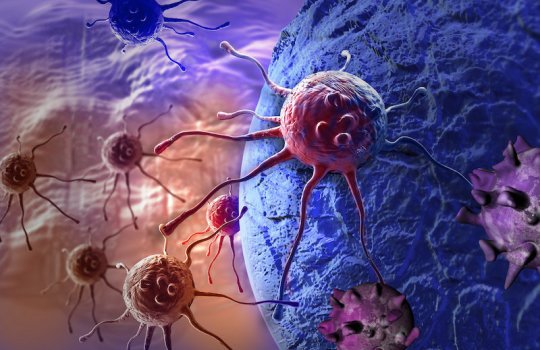Cancer cells’ unexpected genetic tricks for evading the immune system

So-called tumor suppressor genes have long been known to block cell growth, preventing cancerous cells from spreading. Mutations in these genes, scientists believed, thus allow tumors to flourish unchecked.
Now, Howard Hughes Medical Institute Investigator Stephen Elledge's team has uncovered a surprising new action for many of these defective genes. More than 100 mutated tumor suppressor genes can prevent the immune system from spotting and destroying malignant cells in mice , Elledge, a geneticist at Brigham and Women's Hospital, reports September 16, 2021, in the journal Science. "The shock was that these genes are all about getting around the immune system, as opposed to simply saying 'grow, grow, grow!'" he says.
Conventional wisdom had suggested that, for the vast major of tumor suppressor genes, mutations allow cells to run amok, growing and dividing uncontrollably. But that explanation had some gaps. For example, mutated versions of many of these genes don't actually cause rampant growth when put into cells in a petri dish. And scientists couldn't explain why the immune system, which is normally highly proficient at attacking abnormal cells, doesn't do more to nip new tumors in the bud.
Elledge's newpaper offers some answers. His team probed the effects of 7,500 genes, including genes known to be involved in human cancer. A third or more of those cancer-linked genes, when mutated, trigger mechanisms that prevent the immune system from rooting out tumors, often in a tissue-specific manner.
"These results reveal a fascinating and unexpected relationship between tumor suppressor genes and the immune system," says HHMI Investigator Bert Vogelstein, a cancer geneticist at the Johns Hopkins University who was not involved in the research.
| Webiste | ScienceDaily- https://www.sciencedaily.com/ |
|---|---|
| Article Name | Cancer cells’ unexpected genetic tricks for evading the immune system |
| Source | Howard Hughes Medical Institute |
| You can find the article here | https://www.sciencedaily.com/releases/2021/09/210916142856.htm |